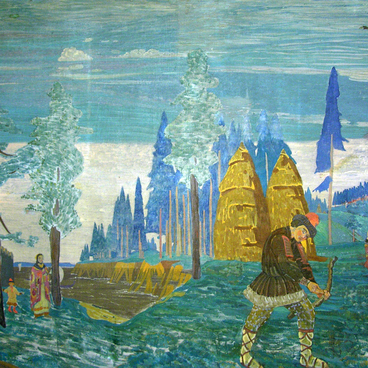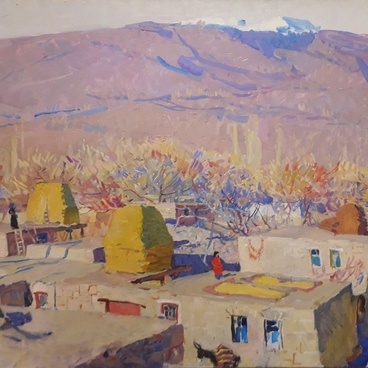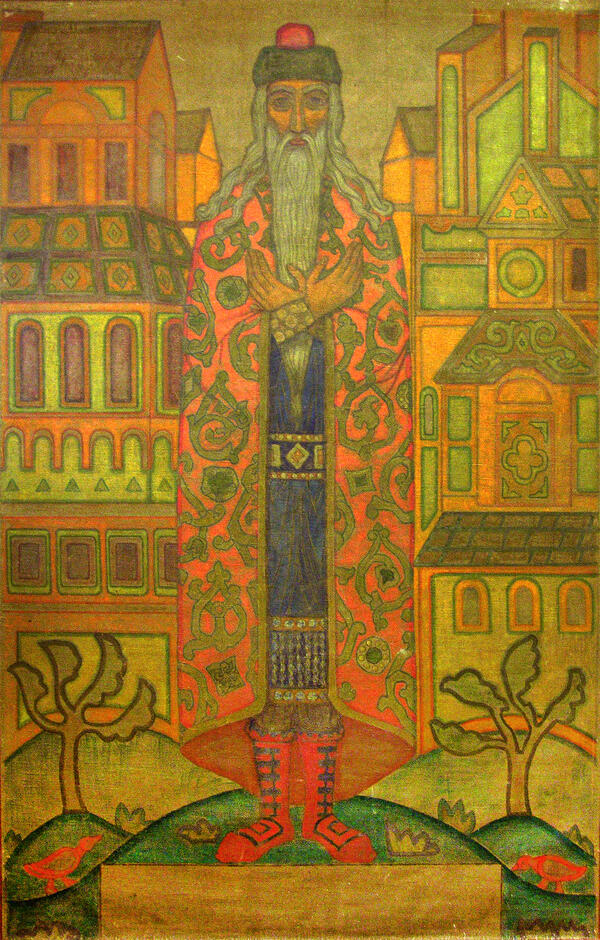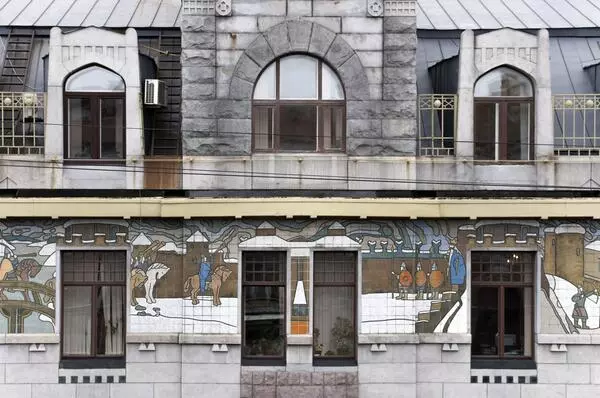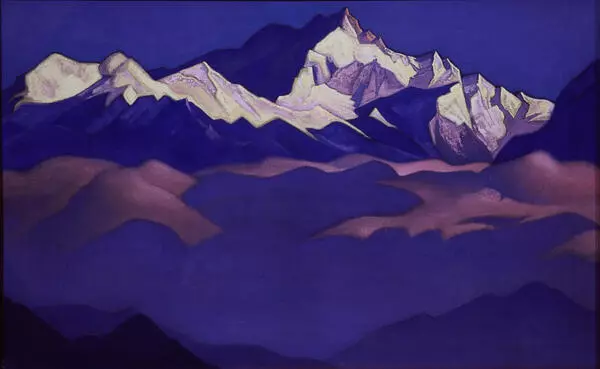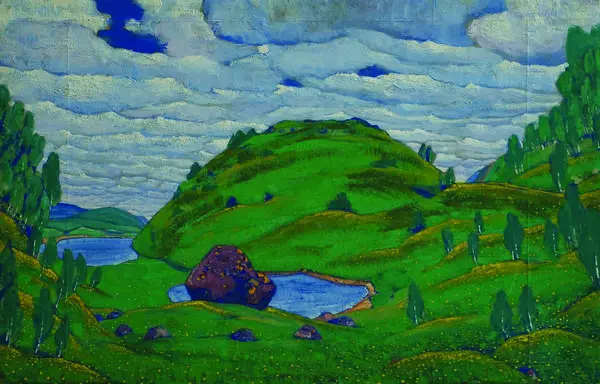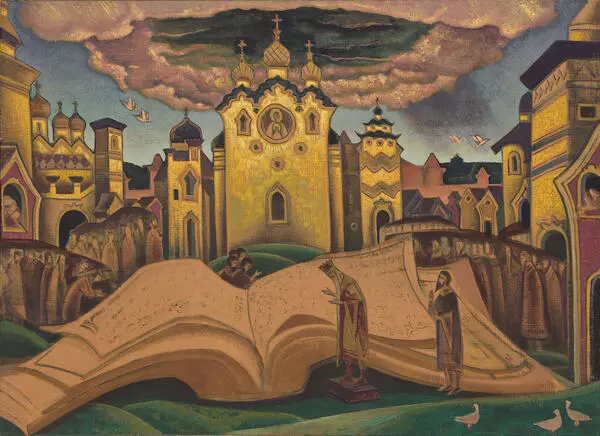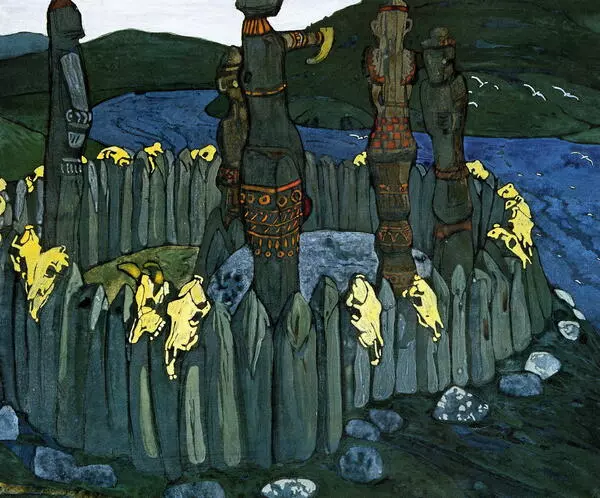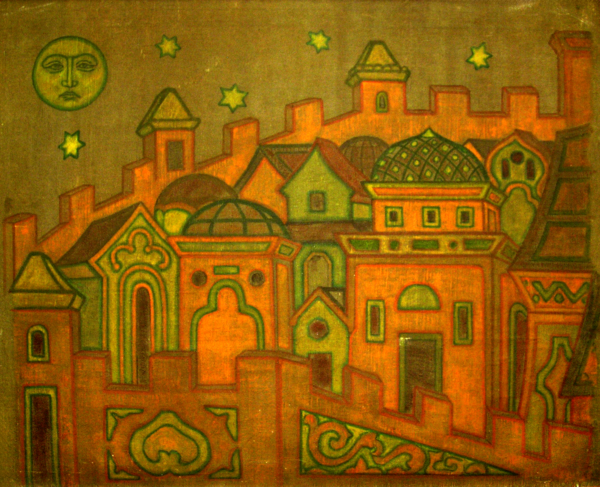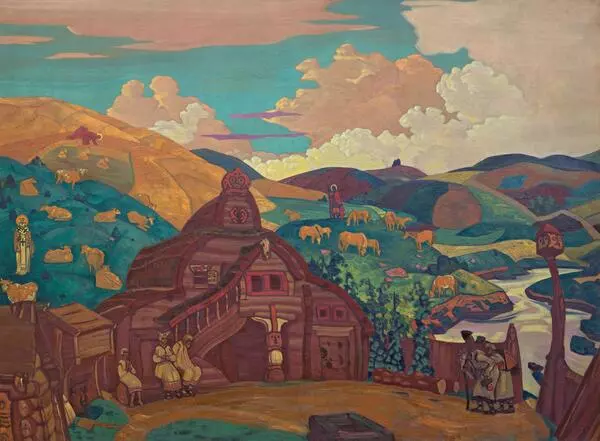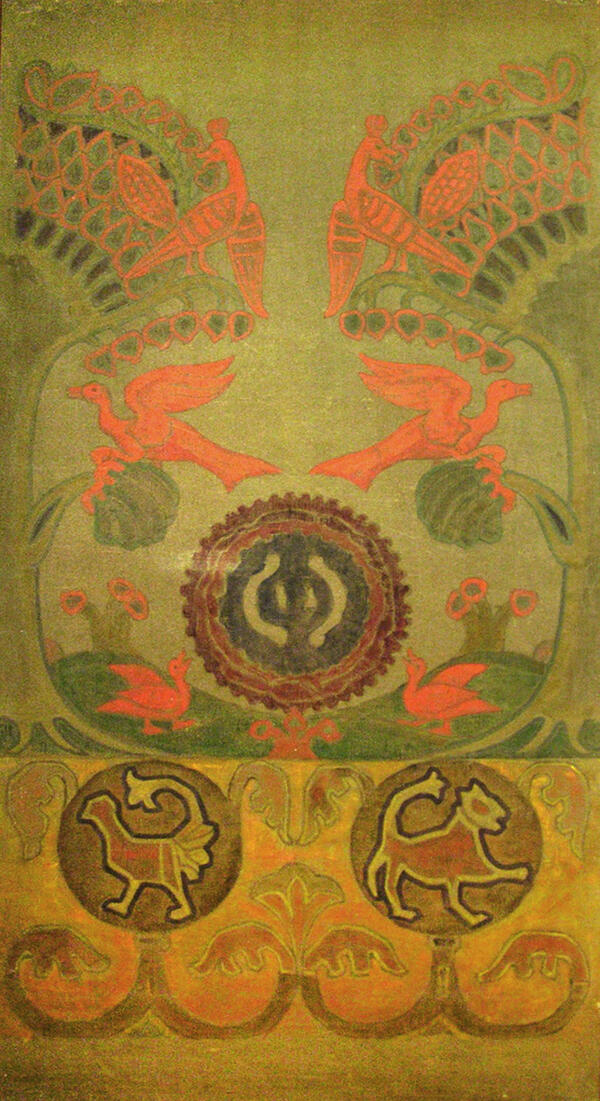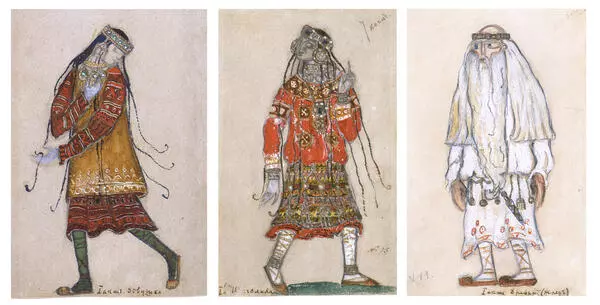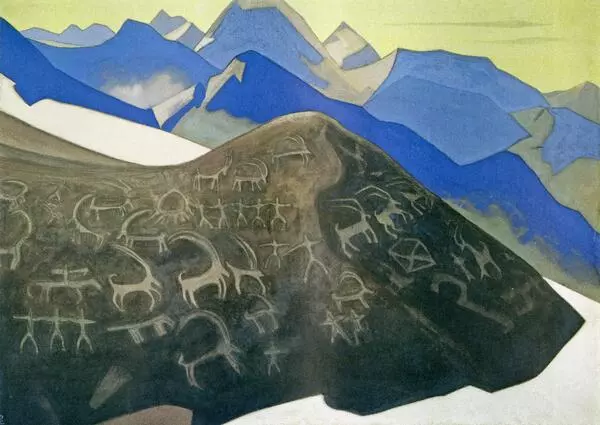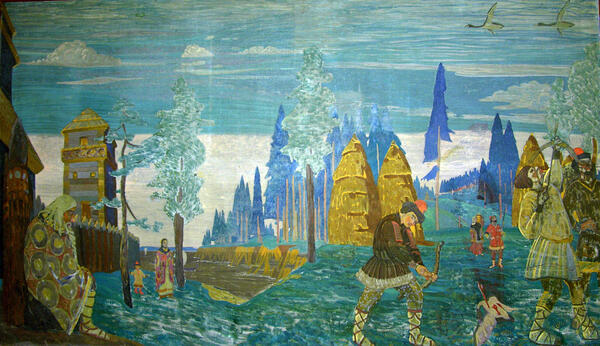The Russian artist, archaeologist and traveler Nicholas Konstantinovich Roerich (1874–1947) saw his mission as educating people’s sense of beauty. He believed that people can become happy if they know their history, their roots and learn to live in harmony with nature. One of the main ideas of his works was the continuity of generations, that is, the preservation of traditions, of everything that creates an inner core, makes people stronger, and leads them to peace and unity.
Nicholas Roerich linked the national spiritual tradition with historical events of the remote past, with the unsolved mysteries of popular beliefs. Like the Art Nouveau artists, Nicholas Konstantinovich, often drew on fairy tales, legends, and folklore.
The artist sought inspiration in the most ancient and beloved images of Russian folk tales: his knowledge in this field was inexhaustible. The symbolism of the painting “Forest people” takes the viewer into a fabulous and fantastic world. The painter turned to the legacy of Slavic paganism, in which forest people were the masters of the forest. The Russian art critic Sergei Rostislavovich Ernst (1894–1980) believed that this painting was inspired by “the magic of earthly mystery” and was distinguished by “its thin and light structure”.
The action in the “Forest people” takes place in the thicket of the autumn forest, where a lost traveler has wandered. Trees stand in a solid wall blocking the way. The leafless intertwining branches form a kind of dense network, trapping the wanderer. A winding river separates him from the foresters, and he humbly asks these wonderful creatures for something.
The artist put a deep philosophical meaning in the canvas. A person has lost his way in life, he is looking for an answer. A small gap in the sky in the upper left corner of the picture gives hope for salvation, because it is to the light that a person is turned. The good-natured faces of the forest people leave the viewer in no doubt that they will help the lost traveler.

